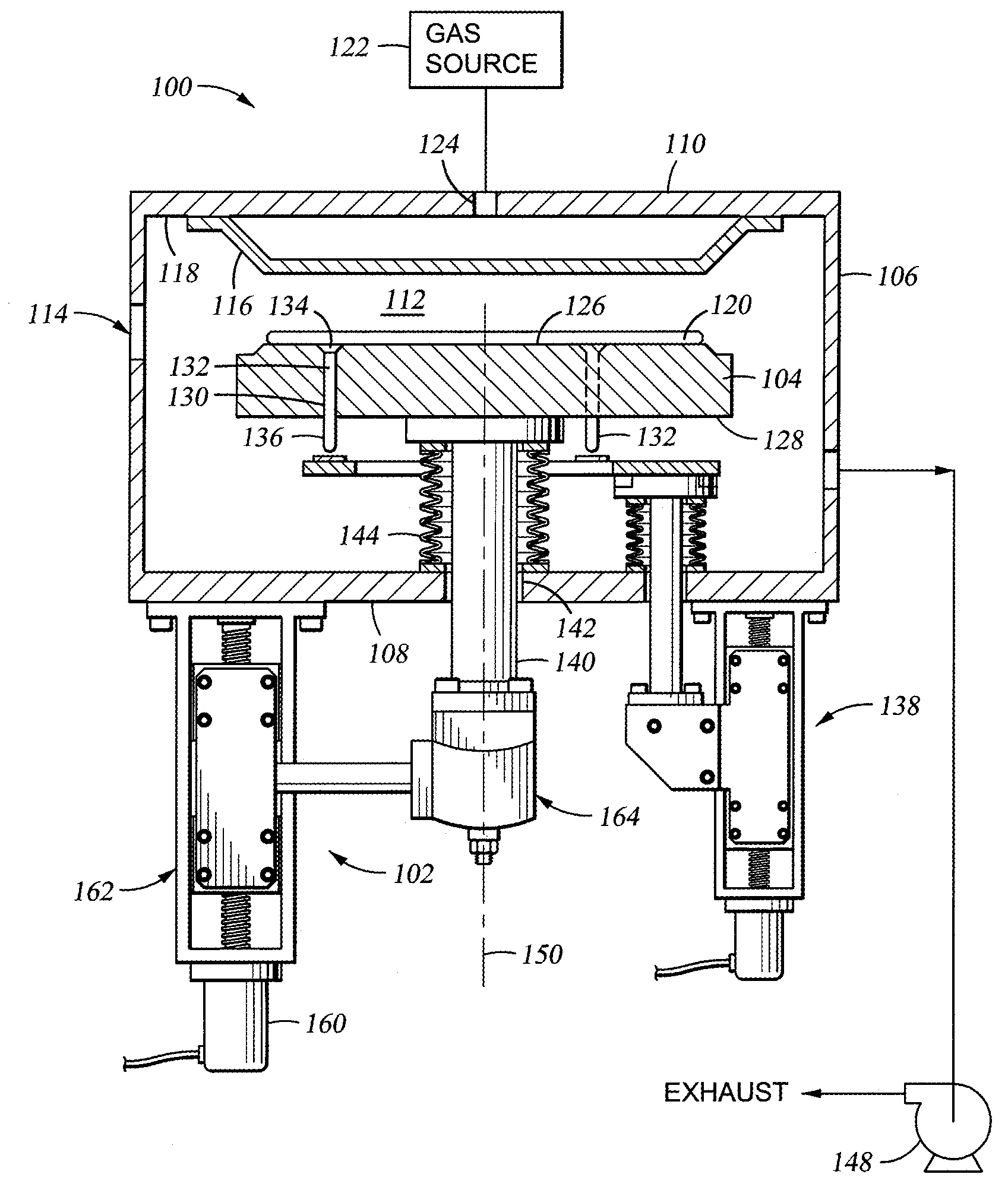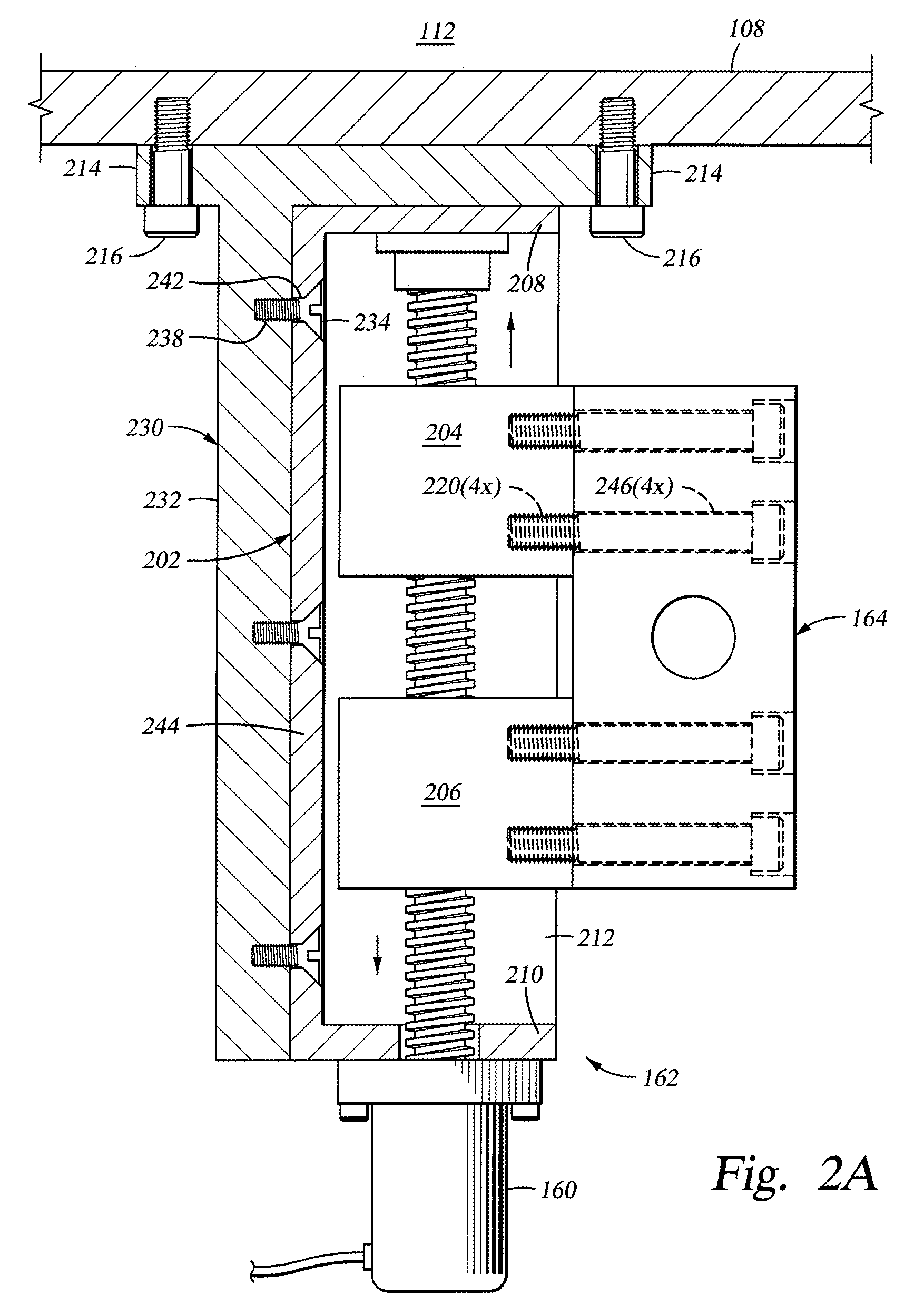Substrate support lift mechanism
a technology of support mechanism and substrate, which is applied in the direction of soil shifting machine/dredger, lifting device, biomass after-treatment, etc., can solve the problems of non-uniformity of plasma enhanced process, non-uniformity of plasma across the width of the substrate,
- Summary
- Abstract
- Description
- Claims
- Application Information
AI Technical Summary
Benefits of technology
Problems solved by technology
Method used
Image
Examples
Embodiment Construction
[0021]FIG. 1 is a simplified sectional view of a semiconductor processing chamber 100 having a substrate support lift assembly 102 for controlling the elevation of a substrate support 104 disposed within the processing chamber 100. Examples of processing chambers that may be adapted to benefit from the invention include WzX® and TxZ™ metal chemical vapor deposition chambers, both available from Applied Materials, Inc. located in Santa Clara, Calif. Although one embodiment of the substrate support lift assembly is illustrated coupled to a chemical vapor deposition chamber, the substrate support lift assembly may be utilized in other processing chambers such as physical vapor deposition chambers, etch chambers, ion implant chambers, rapid thermal anneal chambers, among other chambers wherein parallelism of the substrate support and a lid of the chamber is desirable.
[0022] The processing chamber 100 typically includes sidewalls 106 and a bottom 108 that support a lid 110 to define an ...
PUM
| Property | Measurement | Unit |
|---|---|---|
| Force | aaaaa | aaaaa |
Abstract
Description
Claims
Application Information
 Login to View More
Login to View More - R&D
- Intellectual Property
- Life Sciences
- Materials
- Tech Scout
- Unparalleled Data Quality
- Higher Quality Content
- 60% Fewer Hallucinations
Browse by: Latest US Patents, China's latest patents, Technical Efficacy Thesaurus, Application Domain, Technology Topic, Popular Technical Reports.
© 2025 PatSnap. All rights reserved.Legal|Privacy policy|Modern Slavery Act Transparency Statement|Sitemap|About US| Contact US: help@patsnap.com



